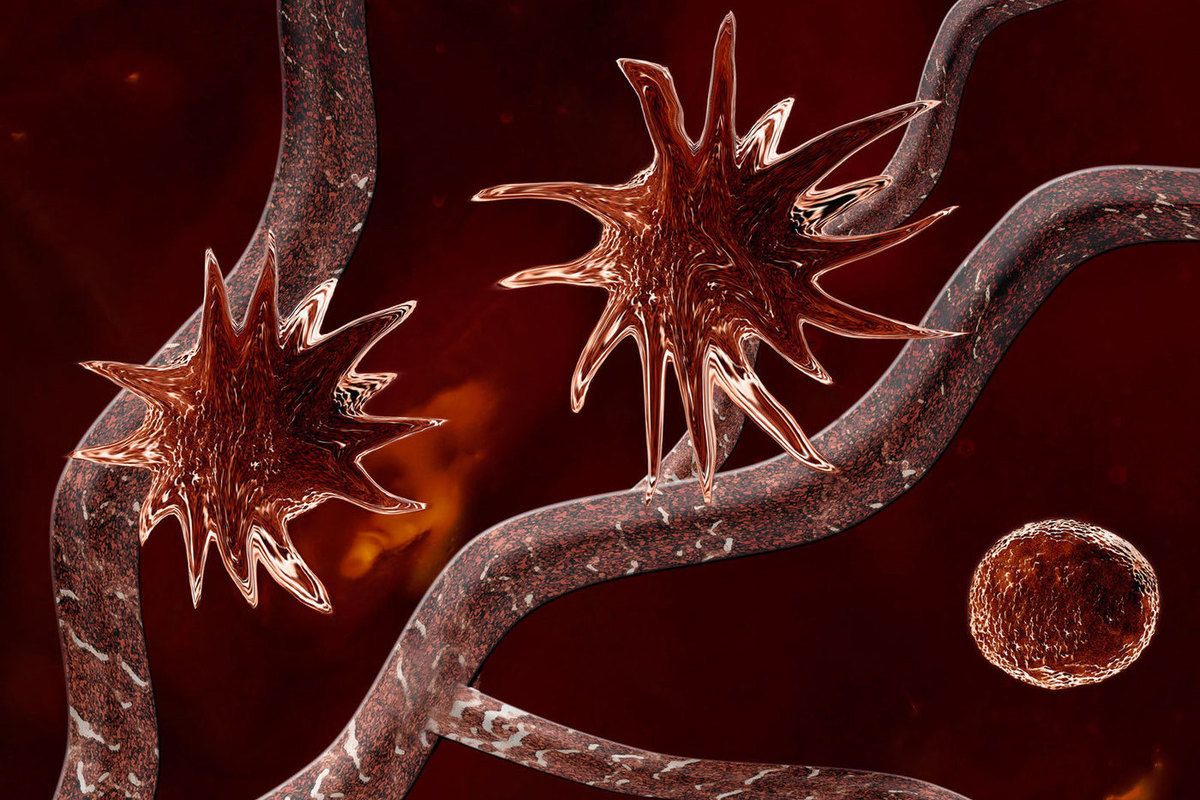Scientists from St. Petersburg have created an oncological theory of evolution: how to “make friends” with cancer
[ad_1]

Cancer cells, which mankind has been trying in vain to exterminate for many decades, can probably be friends. The main thing is to understand why they appear in the body and why in some people they are in a “sleeping” state throughout their lives, while others are mercilessly destroyed. In Russia, a new theory of evolution has been put forward, based on the evolutionary transformation of tumors into useful organs. Its author, professor of St. Petersburg Polytechnic University, head of the laboratory of gene neofunctionalization of the Institute of General Genetics. N.I. Vavilov RAS Andrey KOZLOV revealed the essence of the doctrine.
The new theory of the evolutionary role of inherited tumors has been called carcino-evo-devo. An article about her was recently published in the International Journal of Molecular Sciences. According to scientists, it was from tumors that the female mammary gland and the male prostate developed millions of years ago, which now perform a number of necessary functions. Fat cells in obesity are able to penetrate into many organs, which indicates their tumor nature. The most interesting thing is that the process has not stopped – this is evidenced by evolutionary new genes, which, according to the theory, require additional cell masses, that is, tumors, for their expression (activity). If inherited tumors are an evolutionary link, then you can learn from evolution how to stabilize them, the author of the article believes.
– Andrei Petrovich, how many evolutionary theories exist today? Can your “carcino-evo-devo” stand in the same row with them?
– The list of major evolutionary theories includes Darwin’s theory, genetics, synthetic theory of evolution (symbiosis of Darwinism and genetics) and the theory of evolution of individual development – “evo-devo”. Our theory extends the evo-devo theory, which states that it is not only adults that evolve, but the entire ontogeny. We say that tumors take the most active part in this process. The new theory of “carcino-evo-devo” argues that hereditary tumors in the early stages of progression, which do not kill their hosts, “drive” evolution by participating in the formation of evolutionarily new types of cells, tissues and organs. Thus, our theory considers three main types of biological development – evolutionary, individual and tumor – within the framework of a single approach.
– According to your theory, it turns out that there are tumor cells in every organism?
“Unlike the most well-studied malignant tumors, there are many tumors that we are not aware of. They are only seen by pathologists when a person dies.
– Can you name the organs that were formed as a result of evolution from tumor cells?
– These are our most evolutionarily young organs – the mammary and prostate glands.
– And by what signs did you understand that these glands could have evolved from tumors?
– They have many tumor features, including a high incidence of malignant neoplasms.
“Will this new perspective help us find a way to fight this incurable disease?”
– Certainly! The point is that by accepting the theory of the evolutionary role of inherited tumors (“carcino-evo-devo”), we can change our attitude towards tumors in principle.
It follows from the theory that tumors are an essential property of living matter. Therefore, it is difficult to defeat cancer. But one can learn from evolution how this could be done.
– With what?
– For example, with the help of TSEEN genes. This is a special class of genes – evolutionarily new genes that work in tumors. Their discovery, by the way, also belongs to our scientific group. One of these genes, called Brachyury, whose tumor specificity was first described by us, is now being studied in 30 clinical trials worldwide.
— What comes first – genes or a tumor?
– You asked the most fundamental question – now all the theorists of the world are racking their brains over this.
– How did you guess about the existence of TSEEN genes?
This was one of the statements of our main hypothesis.
– Why do they appear at all? After all, it is believed that human evolution has stopped.
– This is another fundamental question to which no one can give an unambiguous answer yet. But everything points to the fact that the number of genes is increasing, and our genome is still evolving.
What other predictions did you make?
– In 1987, scientists knew about the existence of 12 oncogenes. In a paper published in 1987, I predicted that, according to the new theory, there should be more than 200 of them, according to the number of cell types described by that time.
– And it was confirmed?
– Yes, today we know about four hundred oncogenes and the same number of differentiated cell types.
It is important to understand the evolutionary nature of tumors. If we succeed, we will receive the keys to the treatment of malignant diseases.
Is it possible to predict how a person would change in a few million years?
– Theoretically, yes, it is possible to calculate on a supercomputer how our genes can evolve. If we do this, then we can probably stabilize the cells of organs in humans, in which malignant tumors often occur. Only it will be man-made.
[ad_2]
Source link








